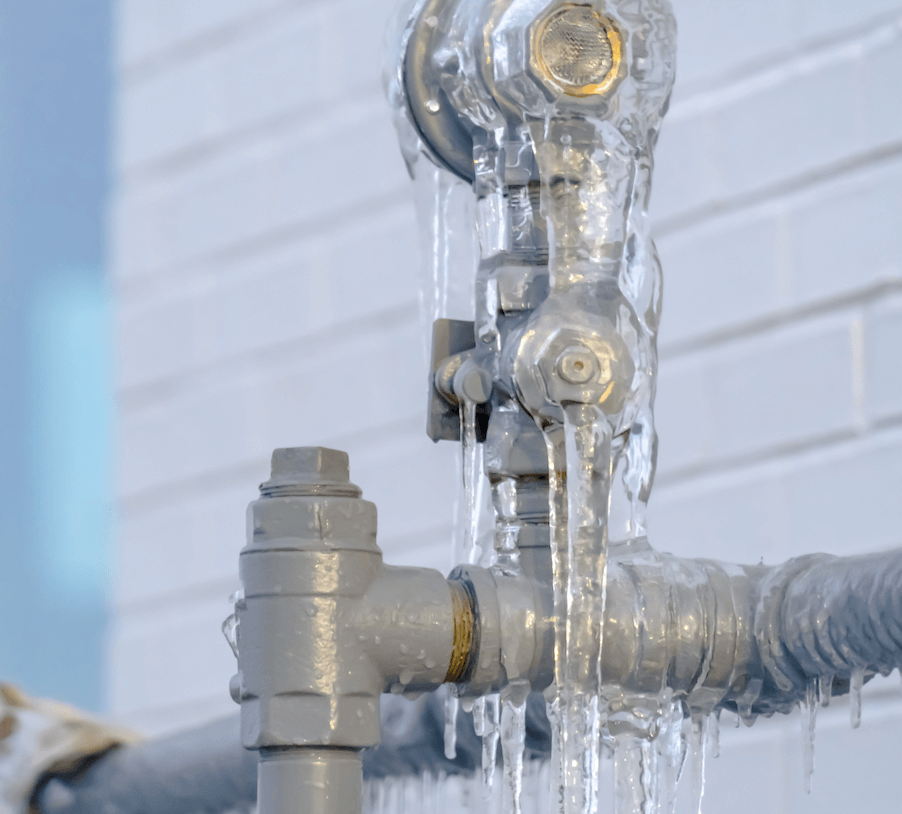Protect Against Frozen Pipes in Cold Weather: Professional Tips
Protect Against Frozen Pipes in Cold Weather: Professional Tips
Blog Article
We have found this article about Winter Plumbing Precautions: Preventing Frozen Pipes below on the web and accepted it made good sense to write about it with you on my blog.

Winter can ruin your plumbing, specifically by freezing pipes. Right here's exactly how to prevent it from taking place and what to do if it does.
Intro
As temperature levels decrease, the risk of icy pipelines boosts, possibly bring about costly repairs and water damages. Recognizing how to avoid icy pipelines is critical for homeowners in cold climates.
Understanding Icy Pipelines
What causes pipes to freeze?
Pipelines freeze when exposed to temperature levels below 32 ° F (0 ° C) for extended durations. As water inside the pipelines ices up, it expands, putting pressure on the pipeline wall surfaces and possibly creating them to break.
Threats and problems
Icy pipelines can bring about water system disruptions, residential property damage, and expensive fixings. Burst pipes can flooding homes and cause substantial structural damage.
Indications of Frozen Pipeline
Determining icy pipes early can prevent them from breaking.
Just how to identify icy pipelines
Try to find decreased water circulation from faucets, unusual smells or sounds from pipes, and visible frost on exposed pipelines.
Prevention Tips
Insulating susceptible pipelines
Wrap pipes in insulation sleeves or utilize warmth tape to secure them from freezing temperatures. Focus on pipes in unheated or exterior locations of the home.
Heating methods
Keep interior spaces appropriately warmed, especially areas with plumbing. Open up closet doors to allow cozy air to circulate around pipes under sinks.
Shielding Outdoor Plumbing
Garden hoses and outside taps
Disconnect and drain yard hose pipes prior to winter. Install frost-proof spigots or cover exterior faucets with protected caps.
What to Do If Your Pipelines Freeze
Immediate actions to take
If you believe icy pipes, keep taps open to ease pressure as the ice melts. Use a hairdryer or towels taken in warm water to thaw pipelines gradually.
Long-Term Solutions
Structural adjustments
Think about rerouting pipelines away from exterior wall surfaces or unheated locations. Include additional insulation to attic rooms, basements, and crawl spaces.
Updating insulation
Invest in high-grade insulation for pipelines, attics, and walls. Correct insulation aids preserve constant temperatures and minimizes the danger of icy pipes.
Verdict
Stopping icy pipelines requires positive actions and fast responses. By comprehending the reasons, indicators, and safety nets, property owners can safeguard their plumbing during cold weather.
5 Ways to Prevent Frozen Pipes
Drain Outdoor Faucets and Disconnect Hoses
First, close the shut-off valve that controls the flow of water in the pipe to your outdoor faucet. Then, head outside to disconnect and drain your hose and open the outdoor faucet to allow the water to completely drain out of the line. Turn off the faucet when done. Finally, head back to the shut-off valve and drain the remaining water inside the pipe into a bucket or container. Additionally, if you have a home irrigation system, you should consider hiring an expert to clear the system of water each year.
Insulate Pipes
One of the best and most cost-effective methods for preventing frozen water pipes is to wrap your pipes with insulation. This is especially important for areas in your home that aren’t exposed to heat, such as an attic. We suggest using foam sleeves, which can typically be found at your local hardware store.
Keep Heat Running at 65
Your pipes are located inside your walls, and the temperature there is much colder than the rest of the house. To prevent your pipes from freezing, The Insurance Information Institute suggests that you keep your home heated to at least 65 degrees, even when traveling. You may want to invest in smart devices that can keep an eye on the temperature in your home while you’re away.
Leave Water Dripping
Moving water — even a small trickle — can prevent ice from forming inside your pipes. When freezing temps are imminent, start a drip of water from all faucets that serve exposed pipes. Leaving a few faucets running will also help relieve pressure inside the pipes and help prevent a rupture if the water inside freezes.
Open Cupboard Doors
Warm your kitchen and bathroom pipes by opening cupboards and vanities. You should also leave your interior doors ajar to help warm air circulate evenly throughout your home.

We were brought to that article about Winter Plumbing Precautions: Preventing Frozen Pipes through a good friend on our other domain. Sharing is good. Helping people is fun. Many thanks for your time invested reading it.
See Availability Report this page